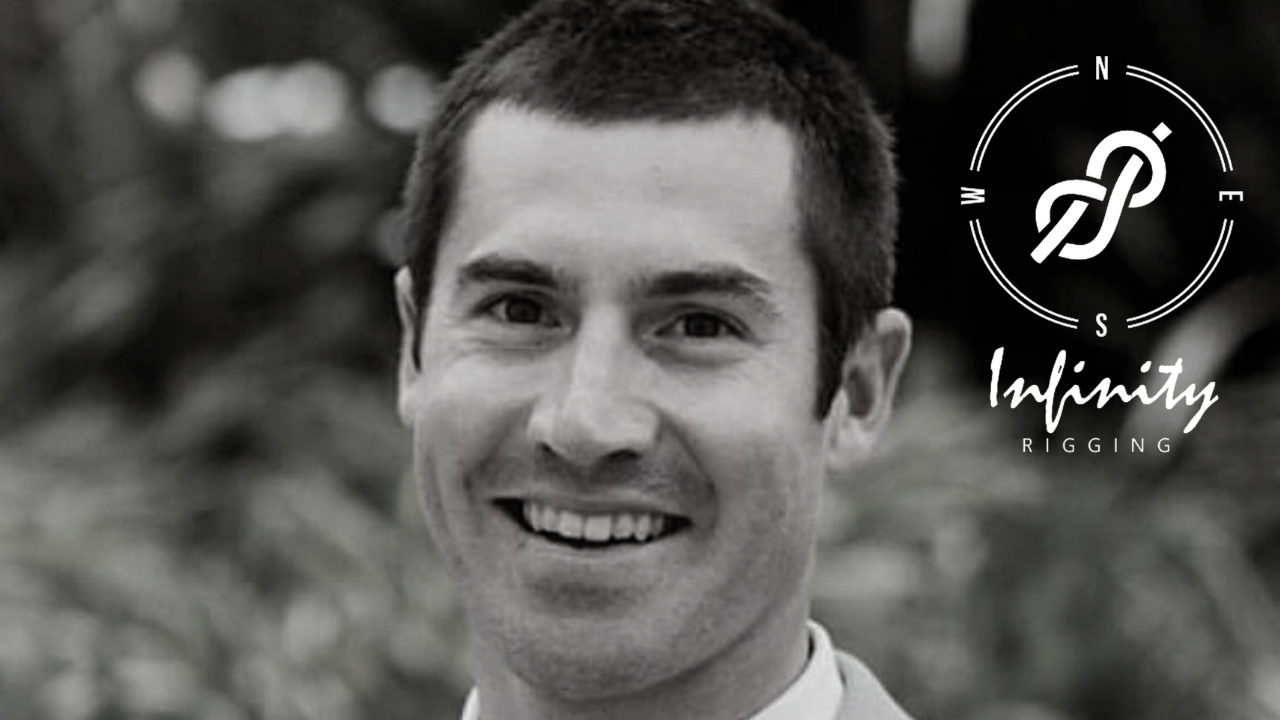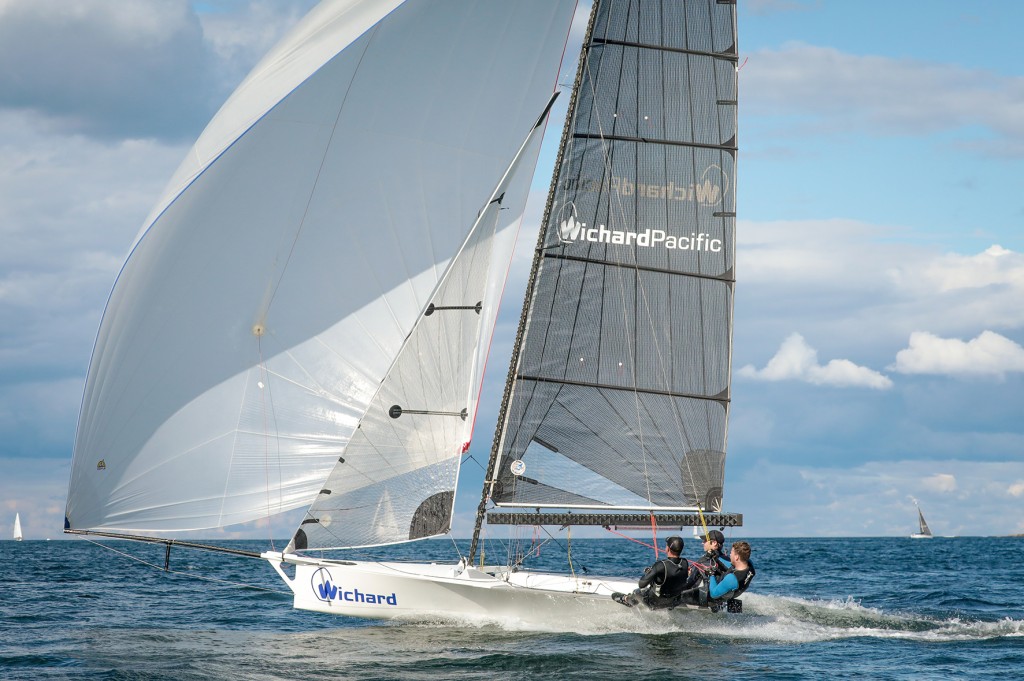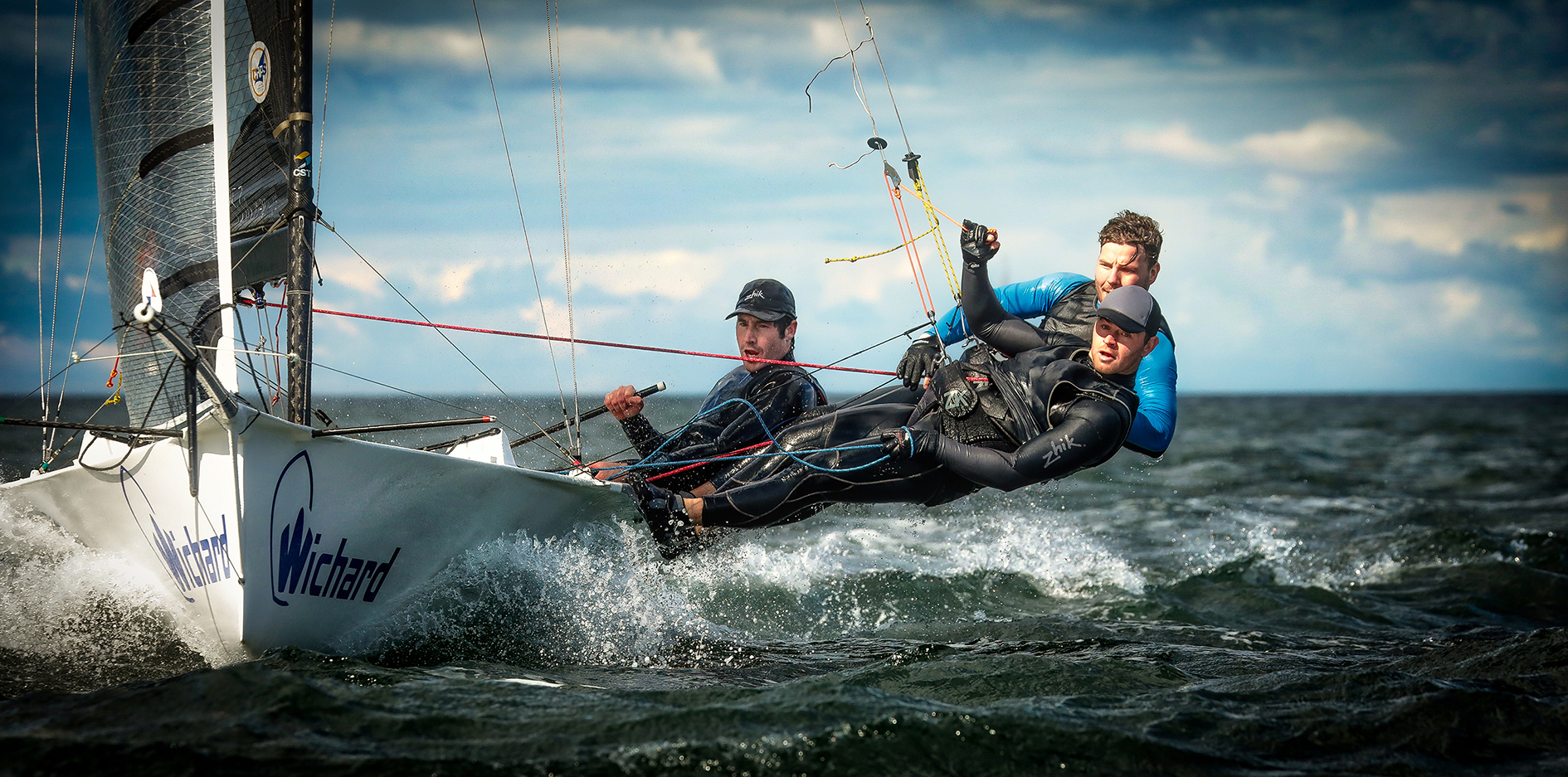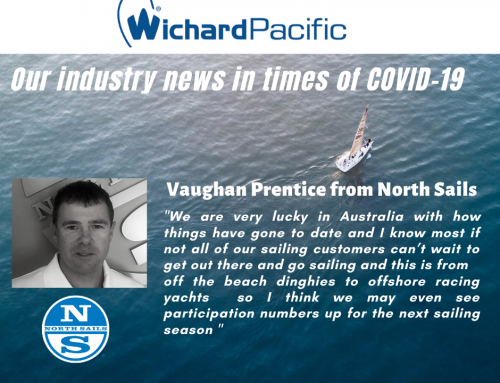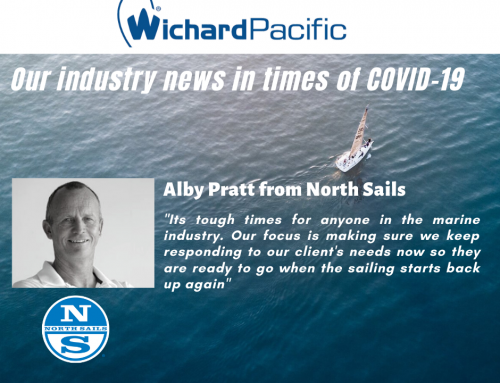Tell us a little about how you grew into 16 foot skiffs, what other classes did you sail in?
I would basically sail anything that had a mast and sail based on what classes the local clubs were racing while I was growing up. I started out at Cronulla Sailing club where I am still involved, and sailed Manly Juniors, Flying 11’s, NS14’s, MG14’s, 29ers then started sailing bigger skiffs. The 16 foot skiff was a natural progression from the other classes I had sailed and over the years. I sailed 16s on and off and filled in for crews over the last few seasons. I decided it was time to get my own boat and be a part of the racing regularly. The class has always been a strongly contested fleet and the last few years have showcased this. It was too big a drawcard to miss out on as I love racing. I also think having that competitive streak in me aided my decision to get involved. I have been sailing 18ft skiffs for the last 4 seasons on a Sunday in the harbour so Saturdays were another free day to go sailing at another local club, St George Sailing club.
What other sailing have you been doing such as yacht races, deliveries etc.?
Most recently the 18ft skiff ‘Rag and Famish Hotel’ which took up the majority of my dedication for competitive racing. I competed in the 2017 and 2018 Sydney to Hobart races, have done various Sydney to Gold Coast races, Hamilton Island race weeks, Port Stephens race weeks and all other local offshore/coastal day races etc. I have done a fair chunk of yacht sailing in my younger years on my fathers Sydney 38 through the local club.
Are you able to compete in other clubs regattas at the moment, state or national championships for example?
It is still uncertain which regattas we are going to be happening. At this stage, the 16ft skiff association is planning to run both the state and national titles later this year and early next year. The zone restrictions have been eased but are still a recommendation from Sailing Australia, as far as I believe. Everything is changing so quickly and everyone is trying their absolute best to make sure we can all go sailing and do so in a safe manner. It’s a revolving situation we find ourselves in and it is very unpredictable as to what many happen in the coming weeks/months.
Some skiff sailors have yachts as well. Are any of them that you sail with also your customers?
It is true what they say, ‘from little things big things grow’ and many of my clients still sail both skiffs and yachts. There are the guys and girls that defy the odds and are sailing skiffs well into their later years and we all aspire to be able to do that when my generation gets to their age no doubt. A lot of yacht owners and sailors come from a skiff background as it has a natural progression to want to sail a bigger boat or even to get involved in ocean racing. Some also enjoy the team aspect and it is also a bit easier to go for a twilight cruise or day sail with the comfort of a yacht.
Do you get some non-marine rigging work through your skiff sailing connections such as building or balustrade work?
I do. Even though the sailing community is relatively small, word travels quickly and invariably someone knows someone who can provide a service for their acquaintance or work colleague. A lot of people work within the construction/engineering industry and their can be a few similarities in being able to provide bits and pieces for a particular job etc. it is always a welcome challenge to provide a solutions that is something a bit different.
You sail on a family yacht as well. What does a rigger do to their own boat that might be unique?
Haha, sometimes it can be a bit like the mechanic who works on others cars and not their own. Often with the skiff or yacht in the family, it is coming up with different ways of doing things or developing an idea to work better as you know you can see what works and what doesn’t without too many ramifications about ruining someones day! I think it is the minor details or the fiddly work you put the time into on your own boat which allows you to develop into a broader scale on clients boats etc
Are there any things or ideas about the rigging of a 16 foot skiff that you incorporate in your yacht rigging work?
Yes, like everyone in the competitive world chasing the limit of strength and reliability, I am no different and the skiffs are sensitive to weight so keeping it as light as possible is an advantage. As technology and materials are constantly evolving, more and more often textiles are replacing attachments and can create very neat, strong and lightweight options with fit outs and hardware. We are seeing this as a flow on effect to larger cruising yachts as bigger examples from the skiff as they can be maintenance friendly and less hazardous. With all of my racing boats I have always tried to make them reliable and ensure everything is working properly as there is nothing more frustrating knowing you could have finished that little bit further up the ladder in a race if not for equipment failure. Eliminating the ‘could have’ is a big one for me. I believe that if you spend the time and money to make something work in the short term, it saves you two fold in the long term whether racing or not. With the cruising aspect, if something is reliable it gives you confidence to be able to go out carefree and even go on extended trips knowing you can rely on your boat and gear which is what I base most of my work on.
Tell us about the recent Profurl electric furler installation you completed. How did that go?
It went very well and was a very straightforward process. No different in installation to a normal Profurl furler as far as the foil and drum/motor was concerned. It is very well thought out in design and construction and allowed for every configuration at deck level as no two boats are ever the same. It fitted very nicely and looked the part too. The customer was sceptical at first but has now been using it trouble-free and said it was the best thing he ever did as he can now sail the boat from the helm without the hassle or a load of a traditional furling line. Being a bigger heavier boat (Buizen 48) and a gentleman in his 70’s, this has made a huge difference in his ability to sail the boat comfortably as he does most of his sailing short or single-handed. He opted for the remote and wears it around his neck so furling at any time is simple and easy.
How are you finding the work load at the moment in these times?
At present it is quite busy. The sailing season has been able to start as most had been scheduled to and I think many people are using their boats more and more as they may not have been able to travel as they had previously. It was a bit up and down to start with as the restrictions had come into effect but as they began to lift or people changed their routine the family boat or the one in the driveway have received a lot more attention and we have had an influx of work. It has ranged from full re-rigs, furler replacements, small parts supply or install and with the second hand market turning boats over at present as well there have been a lot of ‘wish list’ upgrades after purchase.
Why did you approached Wichard to become a potential sponsor?
When I deal with Wichard I know I am always getting a high quality, reliable product, aside from this the team here in Australia back it up with exceptional service no matter who it is you get on the other end of the line. Wichard is a brand that I was confident we could represent in line with the values the company represents globally as well. The team at Wichard Pacific have been around as long as I have been in the industry and believed we could offer some exposure whilst out racing on the water for many years to come. Being a mostly marine based company Wichard had a natural fit to what we are wanting to work towards in the future with the growth and strength of the industry and what better way to do that than on a sailing boat!


